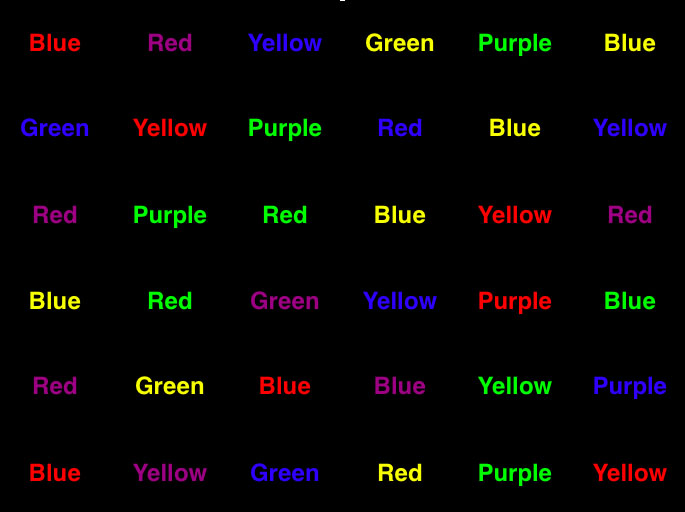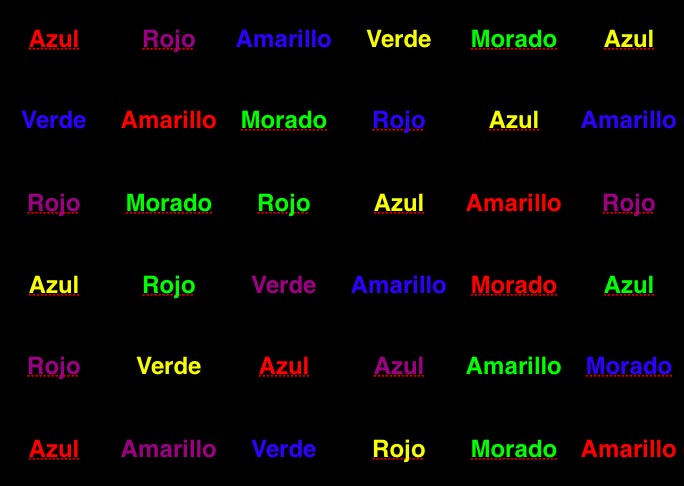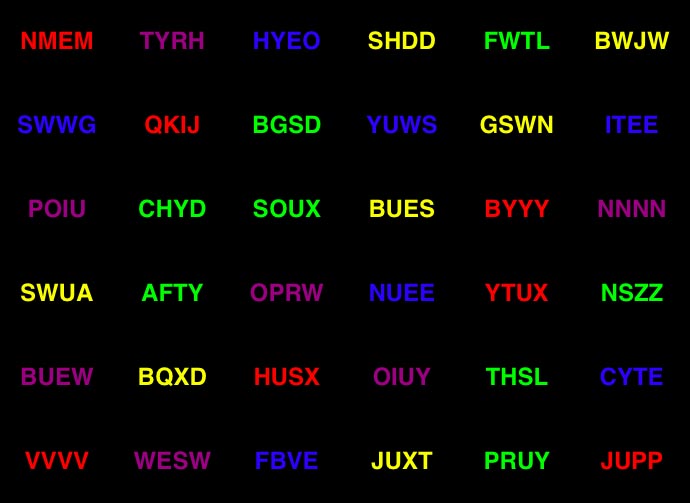
The Stroop Effect
To Do and Notice
Read aloud to a friend the color in which each of the following words is printed.
Do Not read the word.
Have a friend read the words while you name the colors.

How did you do?
Try it again and this time use a stopwatch to time how long it takes you to read each row.
Do you get faster with practice?
Now try it again with the color names printed in Spanish

Try it one more time with the words printed in gibberish.

How did the tasks compare.
Do you speak Spanish? Is there smeone in the room who does, what was their experience?
What's Going On?
In psychology, the Stroop effect is a demonstration of interference in the reaction time of a task. When a word such as blue, green, red, etc. is printed in a color differing from the color expressed by the word's semantic meaning (e.g. the word "red" printed in blue ink), a delay occurs in the processing of the word's color, leading to slower test reaction times and an increase in mistakes. This task is called naming colored words. The effect is named after its discoverer, John Ridley Stroop, who first published his discovery of the effect in 1935.
Stroop identified a large increase on the time taken by participants to complete the Naming Colored Words tasks, an effect still pronounced despite continued practice at each task. This interference is thought to have been caused by the automatization of reading, where the mind automatically determines the semantic meaning of the word, and then must override this first impression with the identification of the color of the word, a process which is not automatized.
|
Scientific Explorations with Paul Doherty |
|
21 October 2006 |